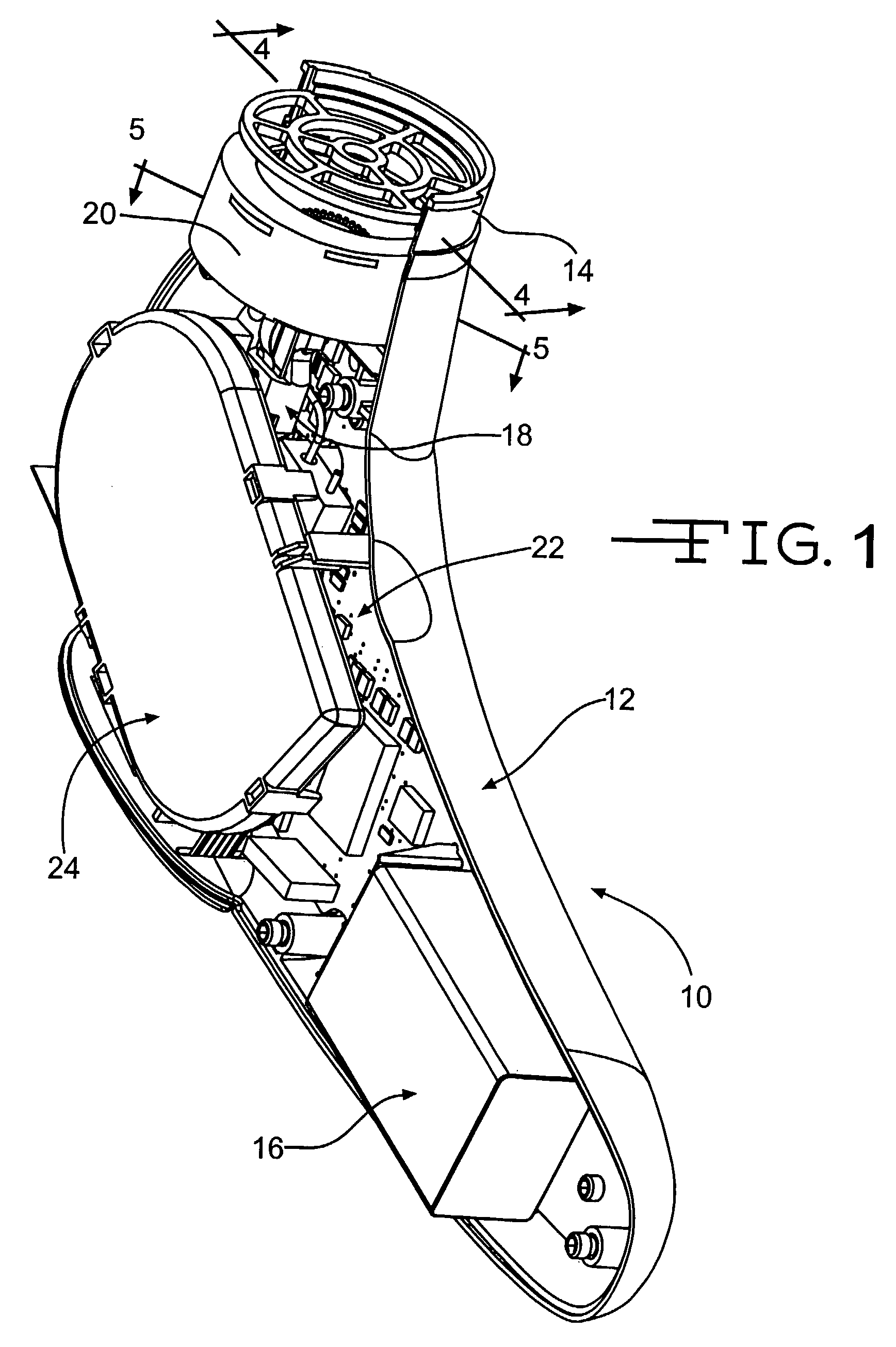Nozzle for handheld pulmonary aerosol delivery device
a technology of aerosolized liquid and nozzle, which is applied in the direction of liquid supply arrangements, burners, electrostatic spraying apparatus, etc., can solve the problems of insufficient wetting of shields, and achieve the effects of enhancing the flow of aerosolized liquid, less device size, and more economical manufactur
- Summary
- Abstract
- Description
- Claims
- Application Information
AI Technical Summary
Benefits of technology
Problems solved by technology
Method used
Image
Examples
Embodiment Construction
[0041]Convenience and effectiveness of a hand-held pulmonary delivery device (e.g., inhaler) is enhanced through an improved Electrohydrodynamic (EHD) nozzle. In particular, improvements to EHD nozzles include the equal distribution of fluid to the nozzle tips when the EHD nozzle is aimed at various angles, rather than requiring that the EHD nozzle be aimed downward. The improvements also include several innovations for reducing or eliminating wetting in the EHD nozzle that could degrade voltage and thus particle size or cause arcing between the discharge and reference electronics.
[0042]Liquids amenable to aerosolization by electrohydrodynamic spraying generally are characterized by particular electrical and physical properties. Without limiting the scope of the invention, liquids having the following electrical and physical characteristics permit optimum performance by the device and method to generate a clinically relevant dose of respirable particles within a few seconds. The sur...
PUM
 Login to View More
Login to View More Abstract
Description
Claims
Application Information
 Login to View More
Login to View More - R&D
- Intellectual Property
- Life Sciences
- Materials
- Tech Scout
- Unparalleled Data Quality
- Higher Quality Content
- 60% Fewer Hallucinations
Browse by: Latest US Patents, China's latest patents, Technical Efficacy Thesaurus, Application Domain, Technology Topic, Popular Technical Reports.
© 2025 PatSnap. All rights reserved.Legal|Privacy policy|Modern Slavery Act Transparency Statement|Sitemap|About US| Contact US: help@patsnap.com



